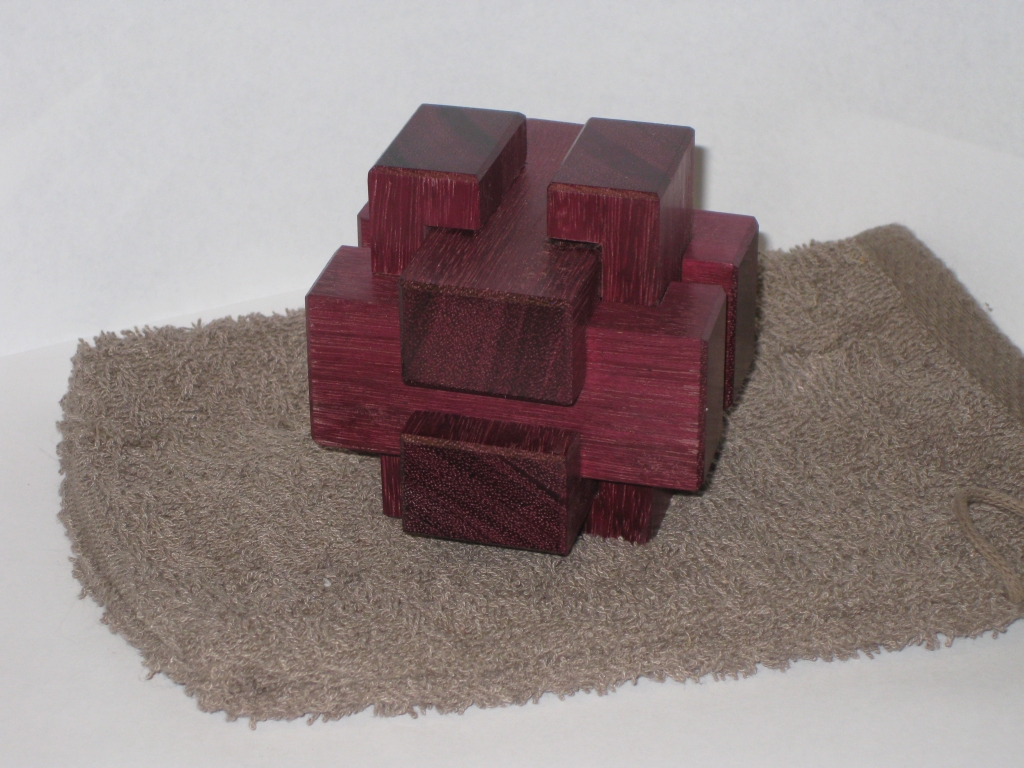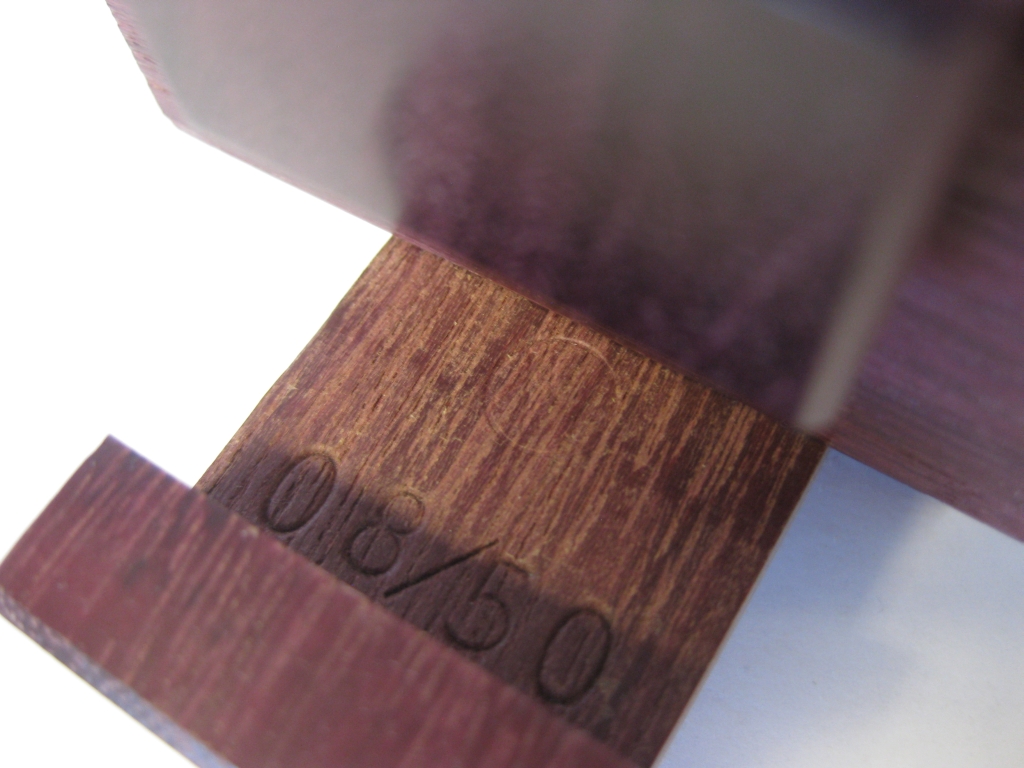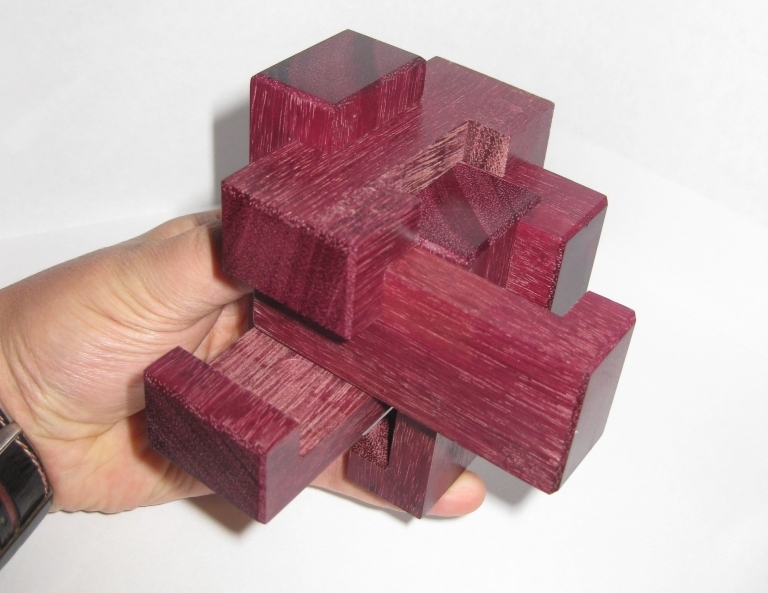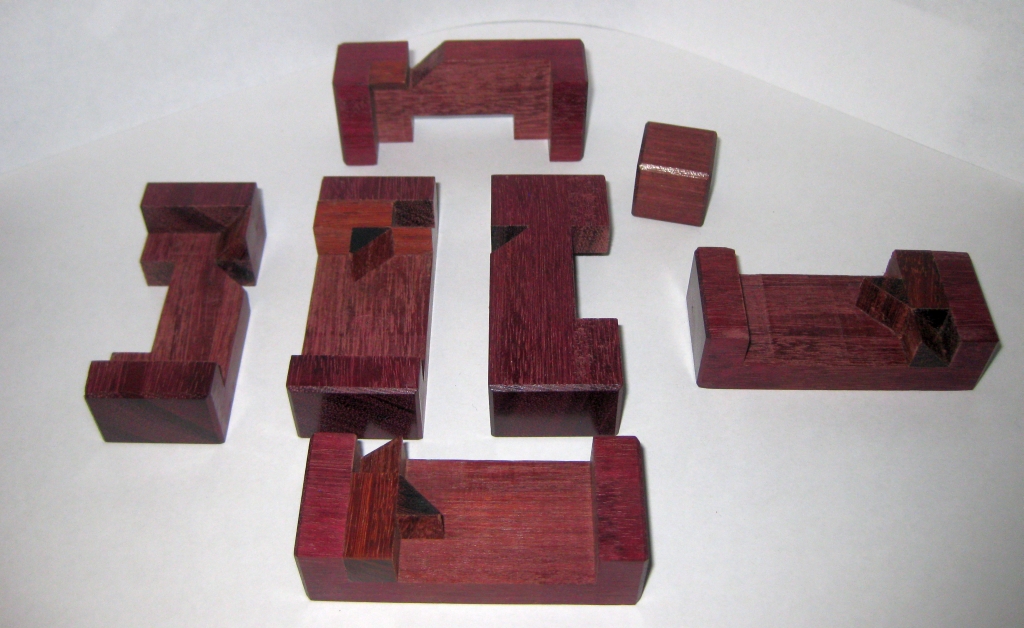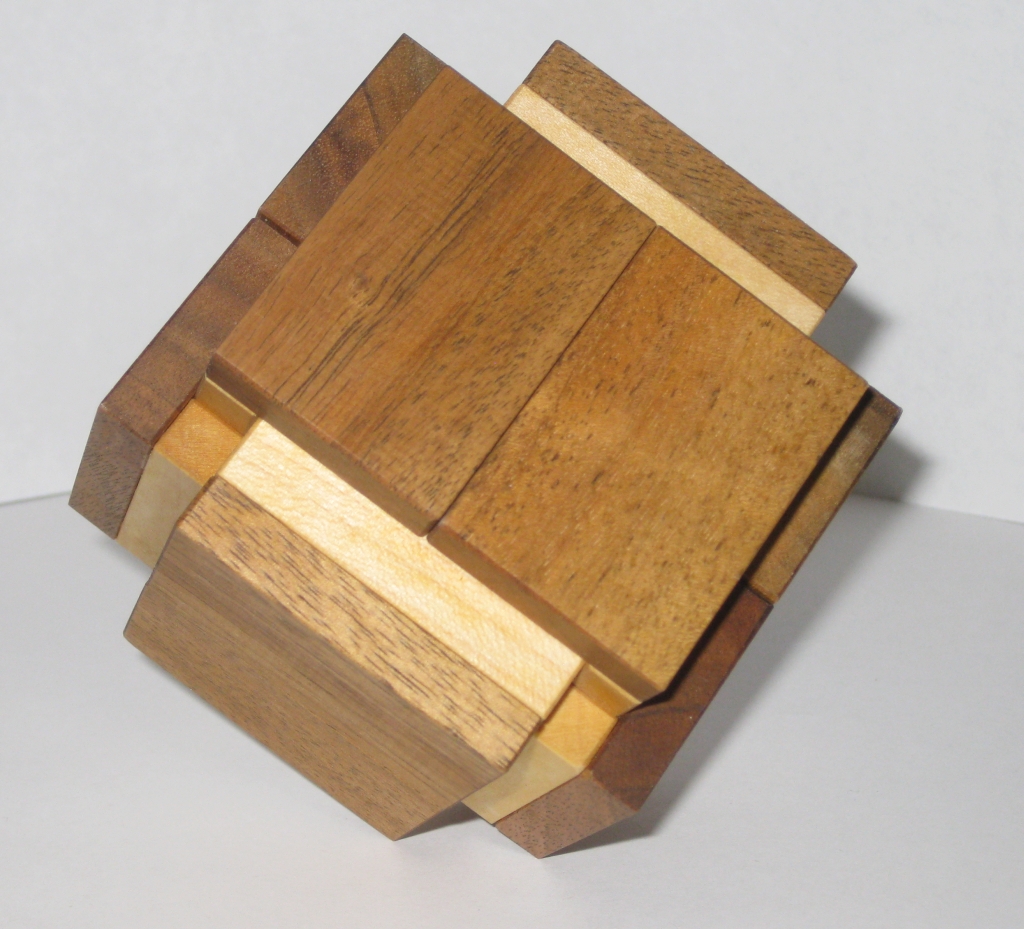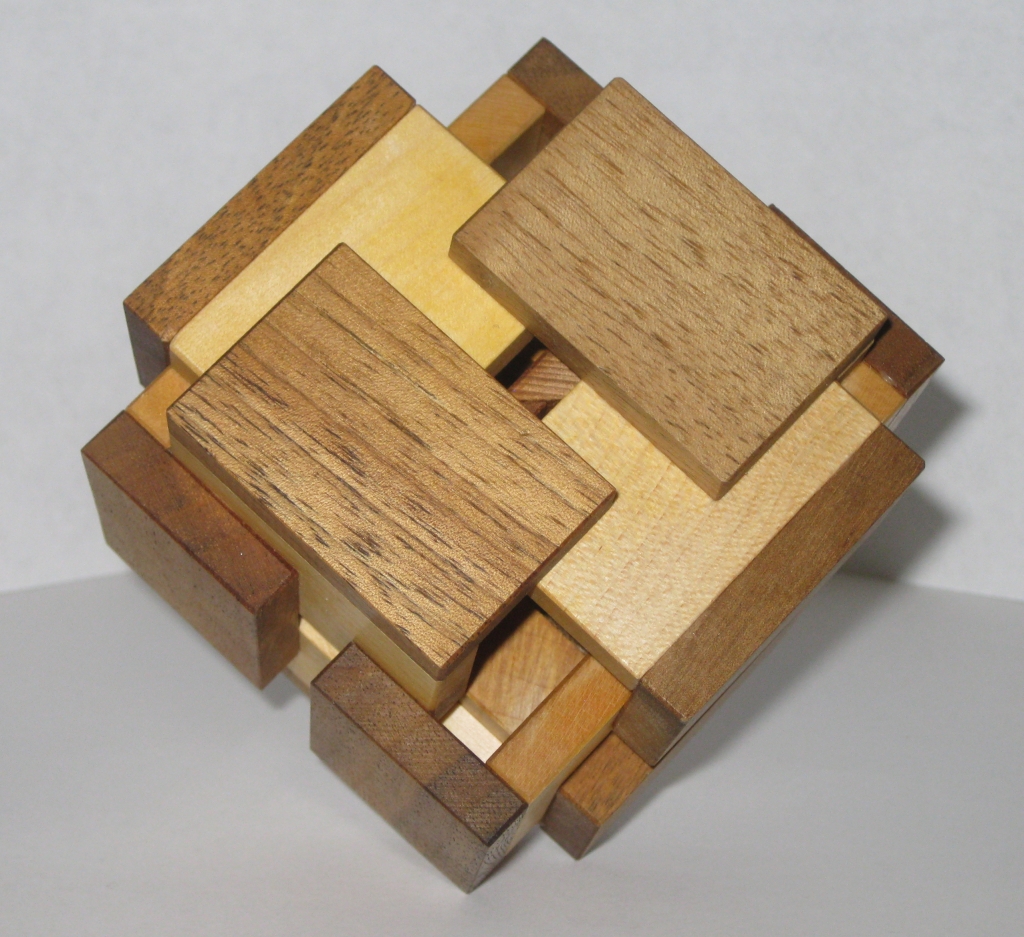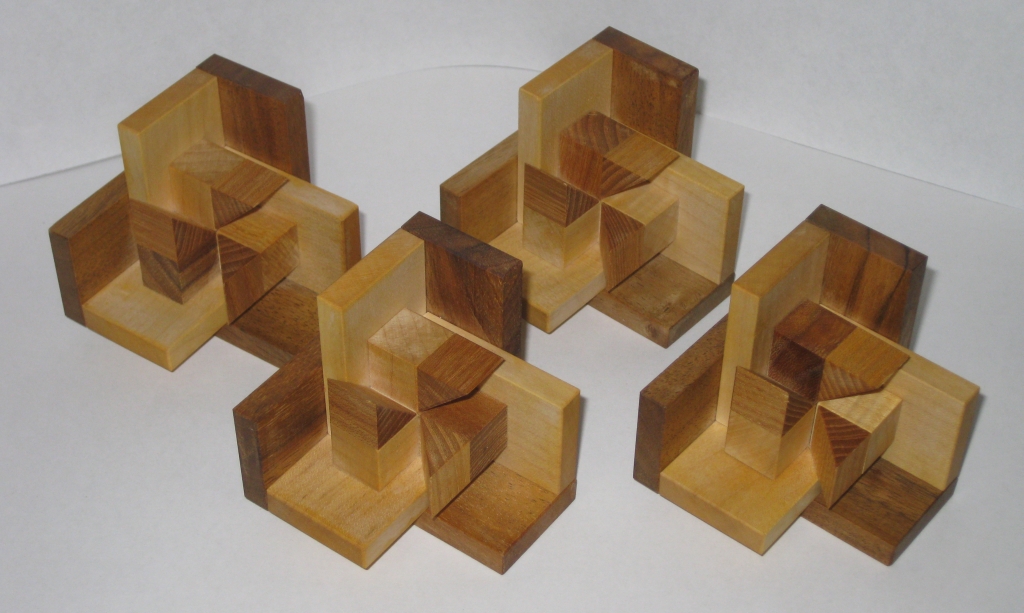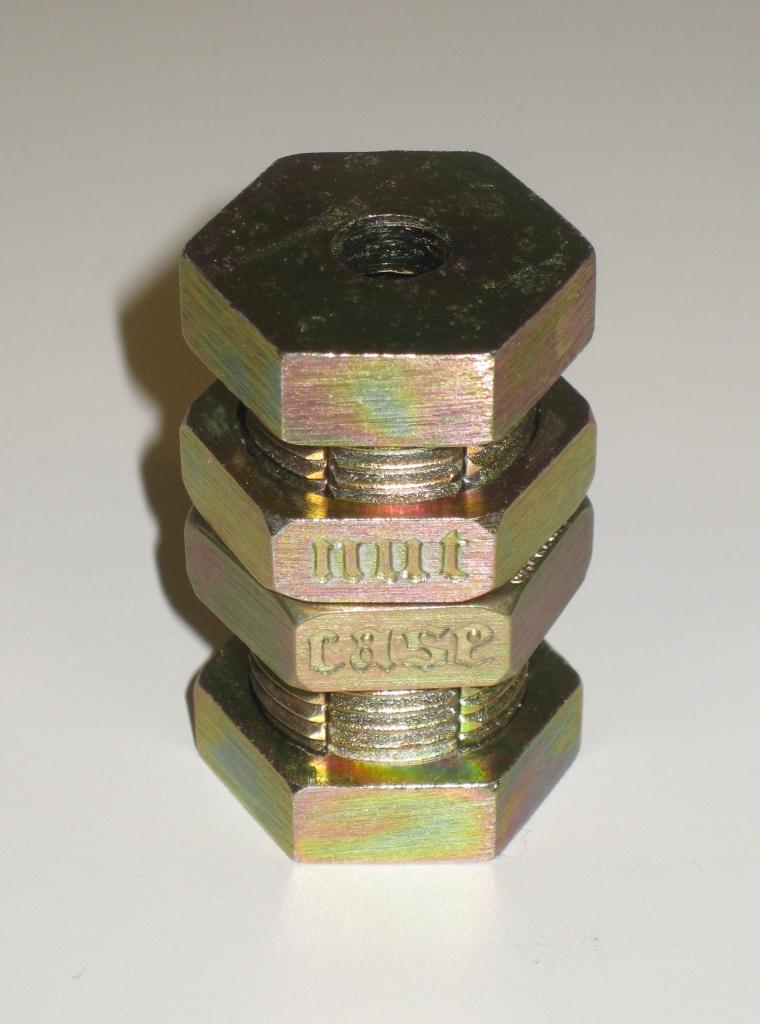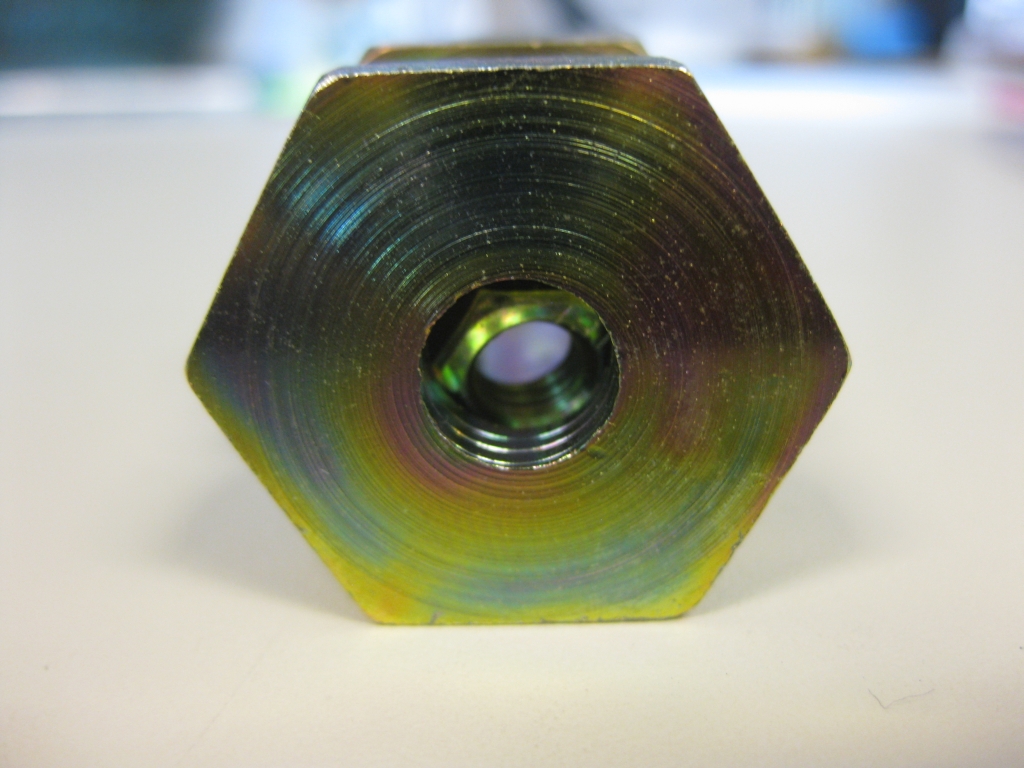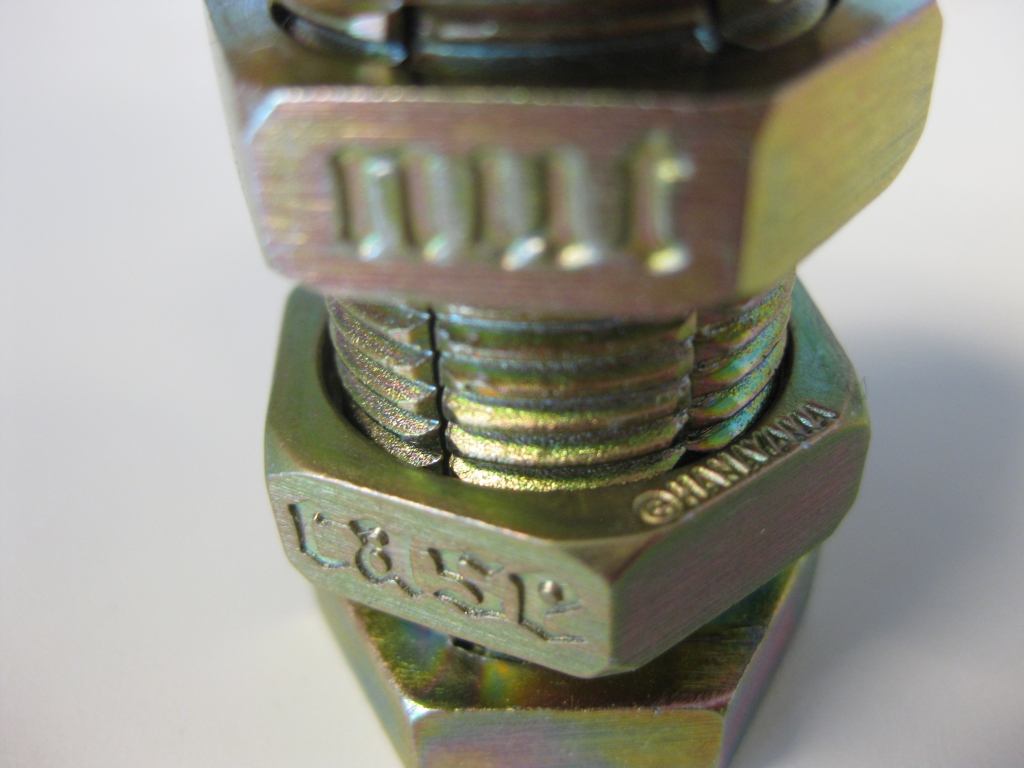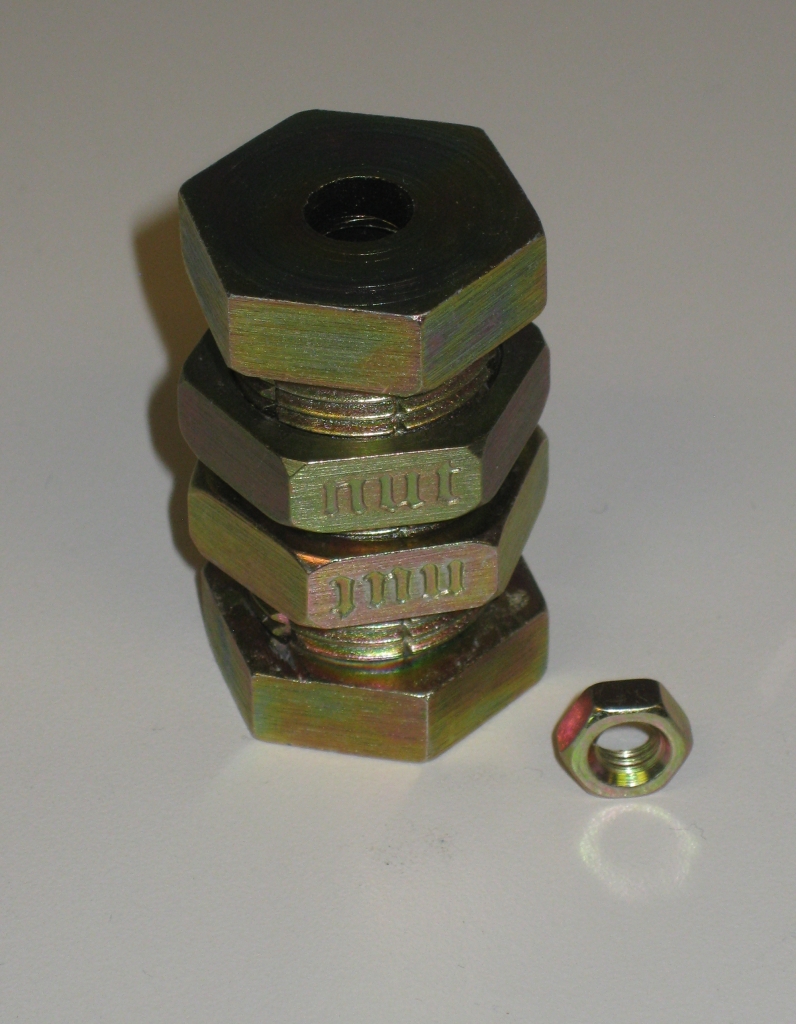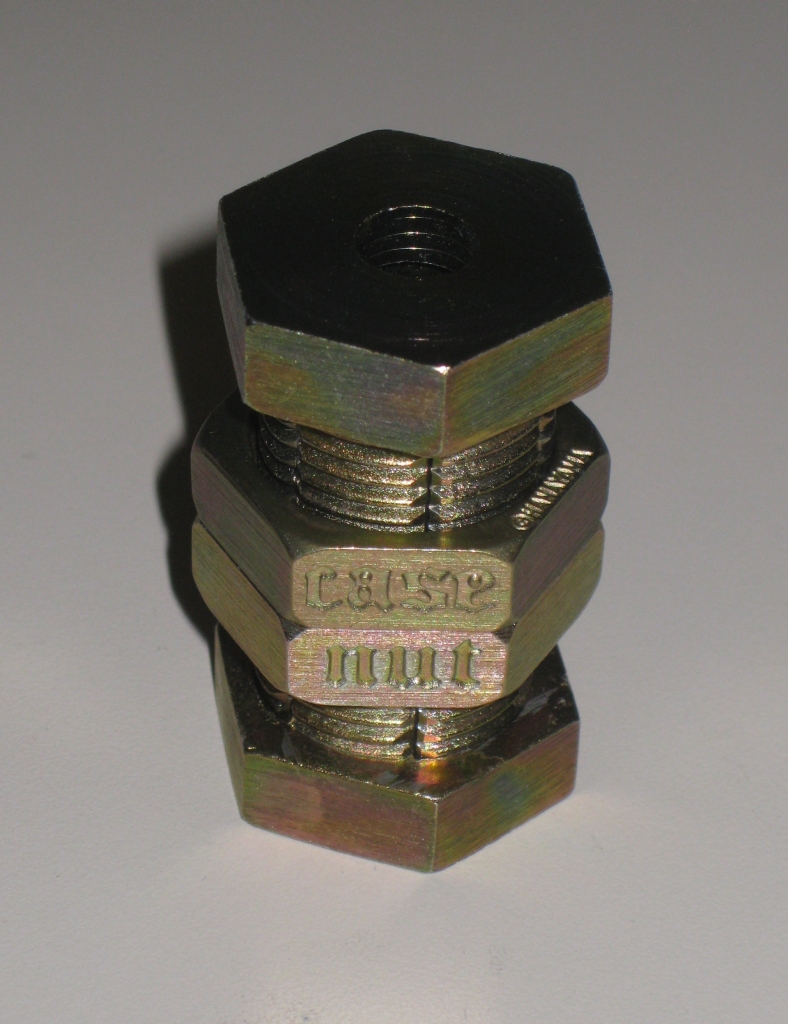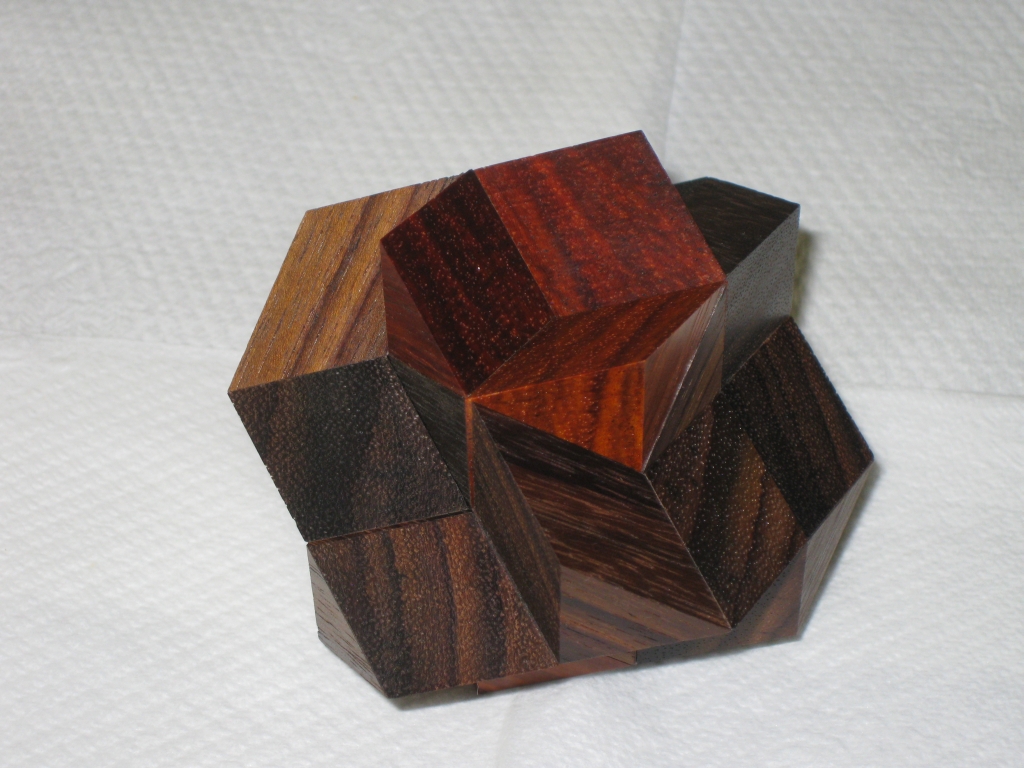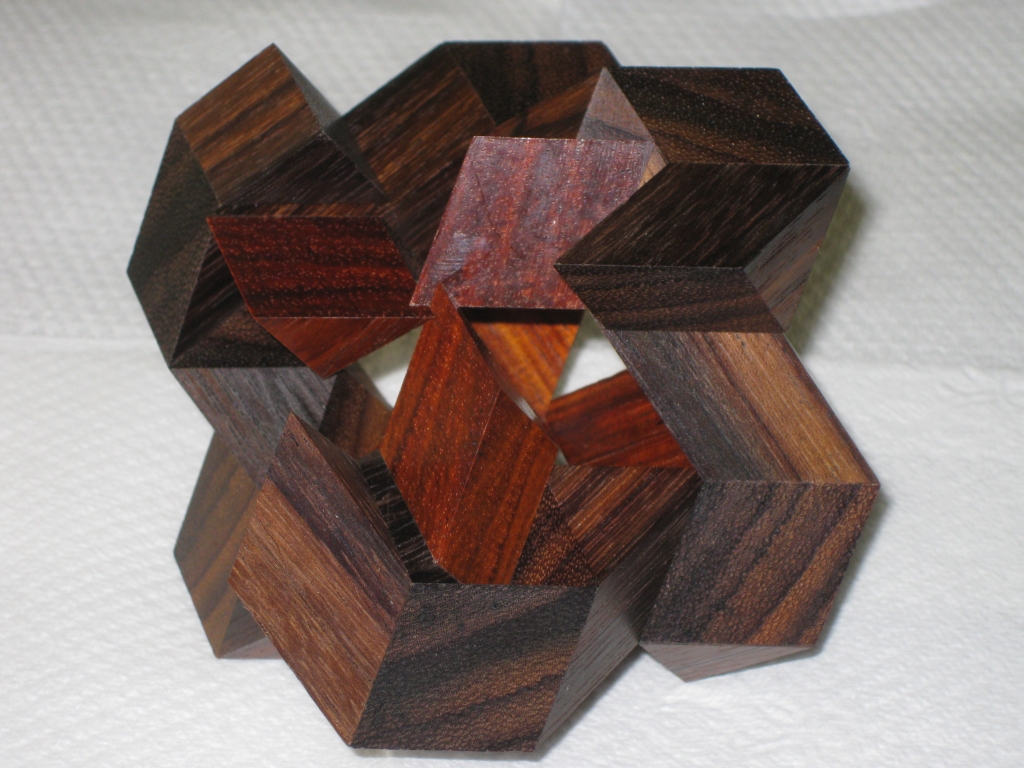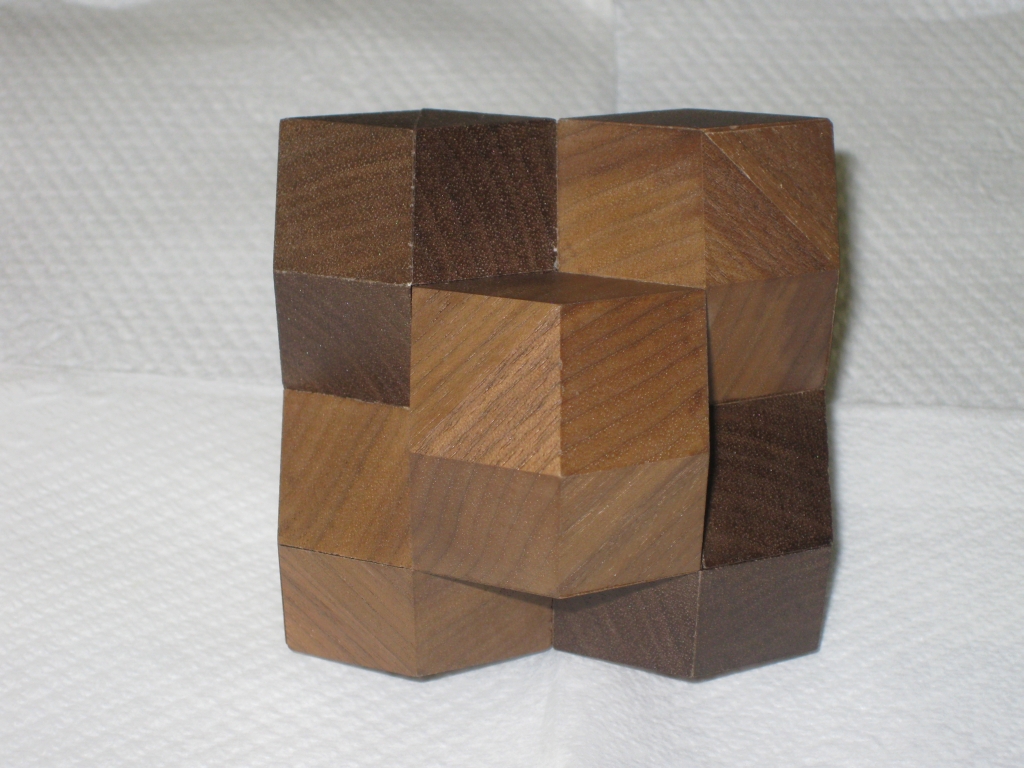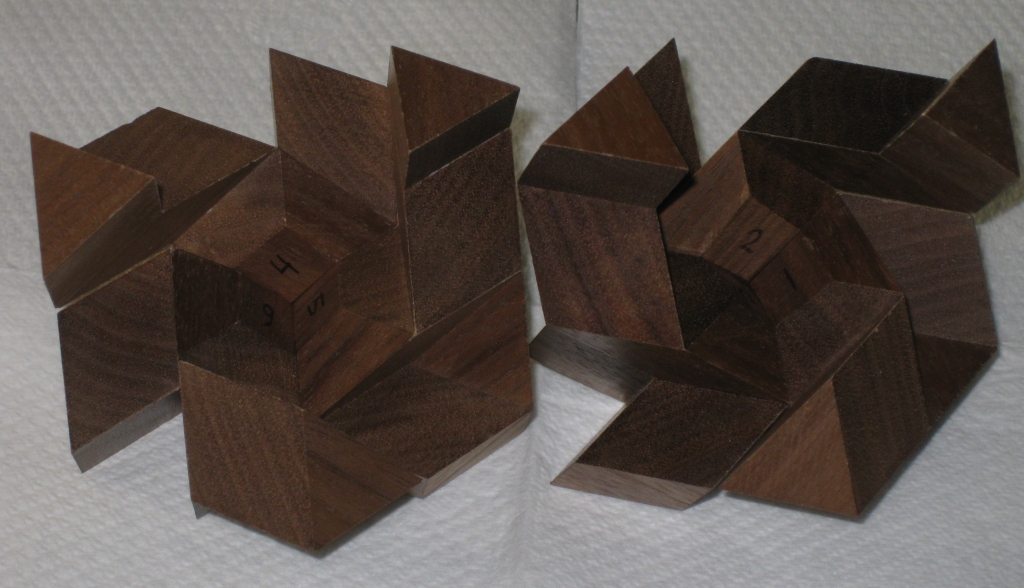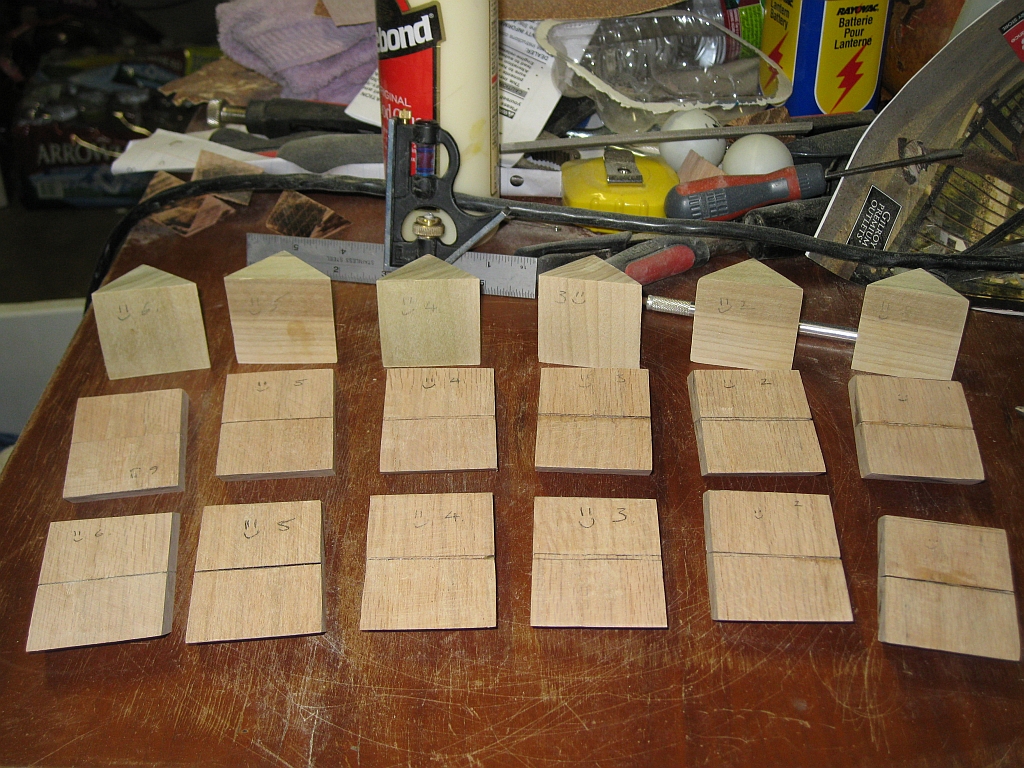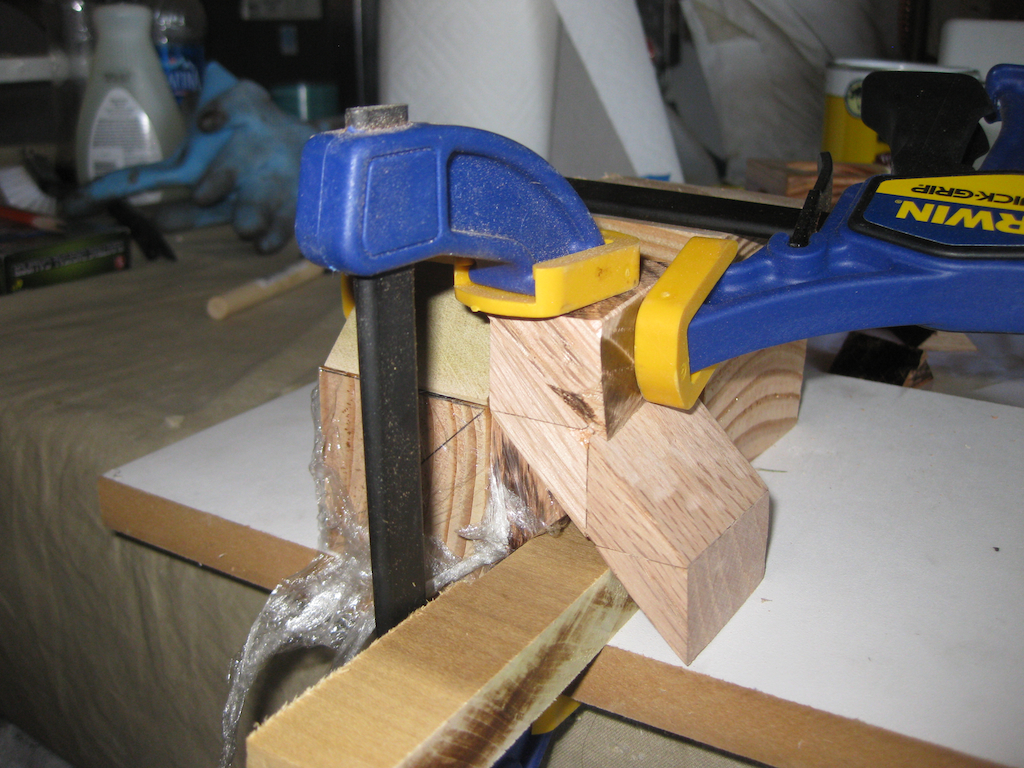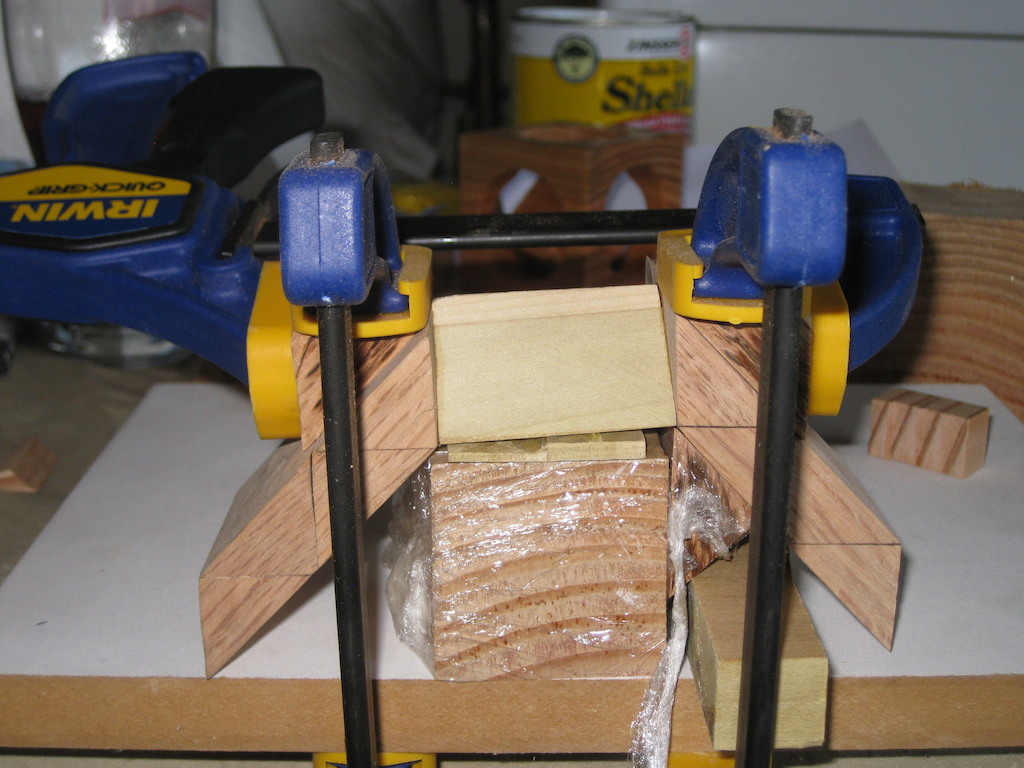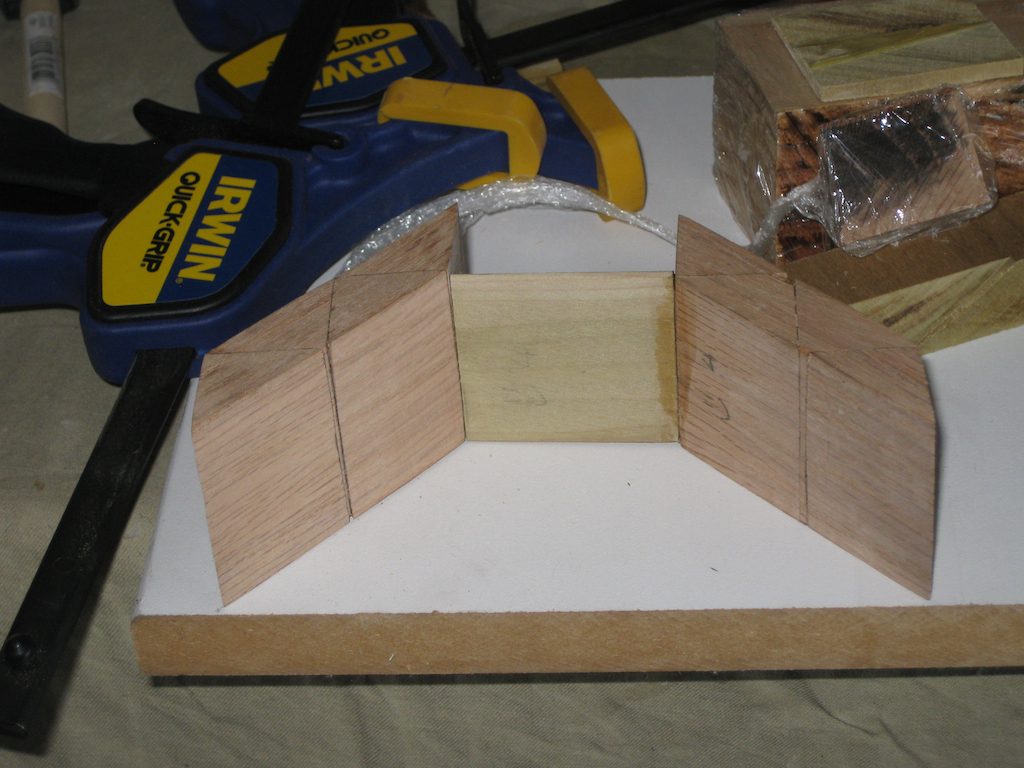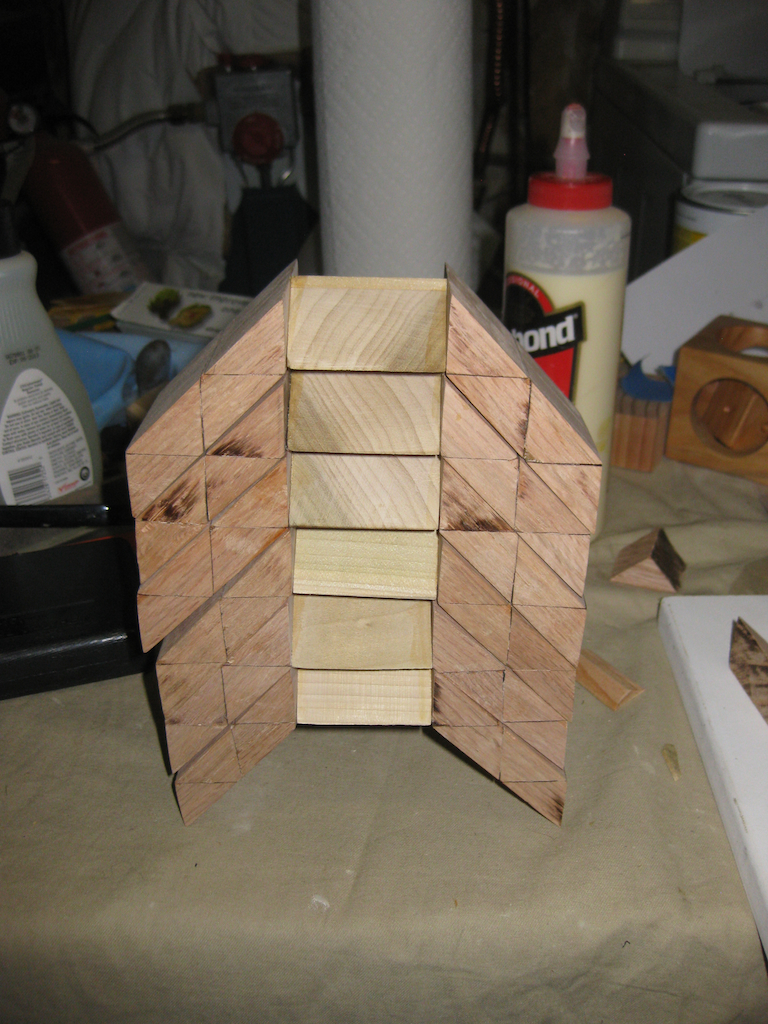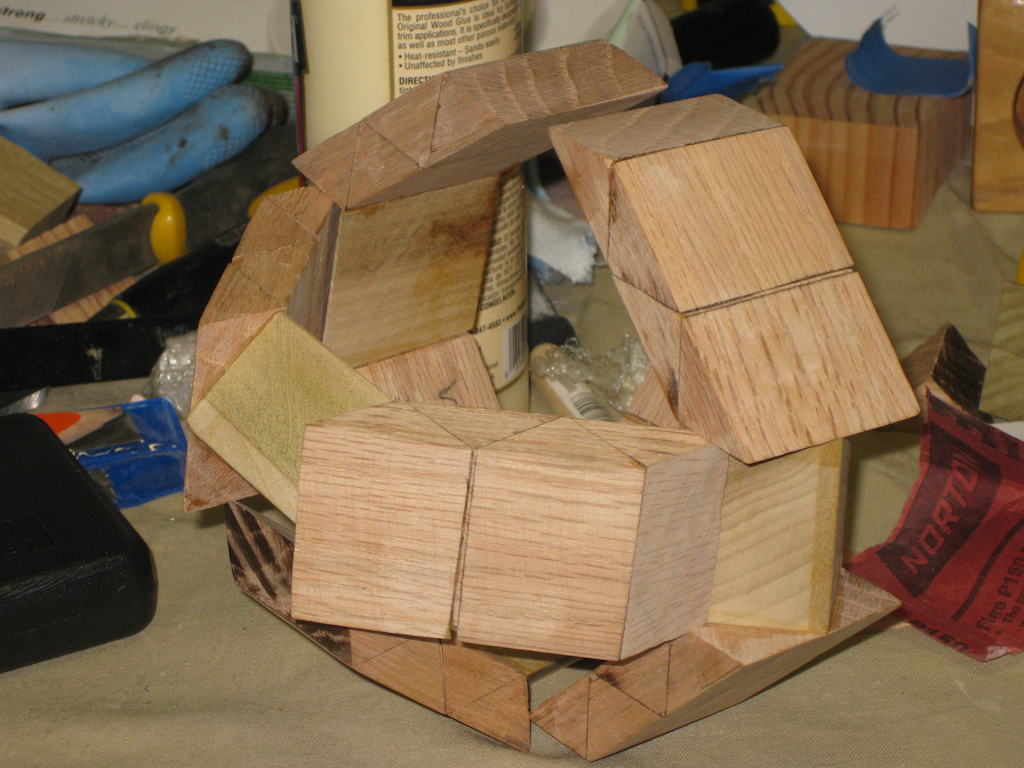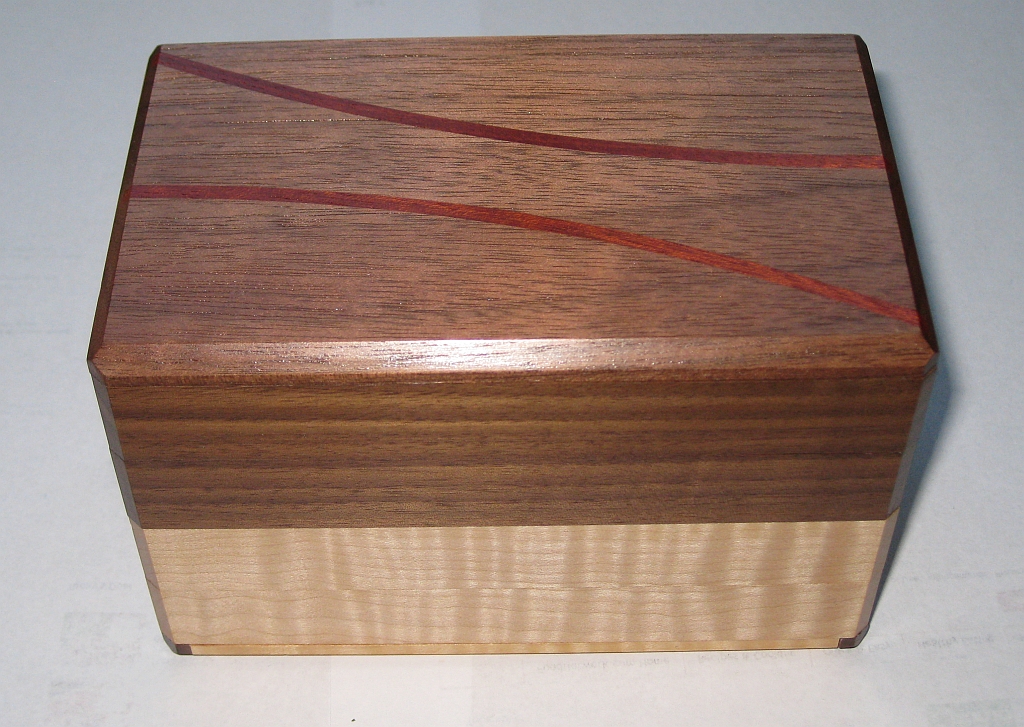One of the Top 10 Vote Getters at this years IPP design competition was the Blind Burr, designed by Gregory Benedetti and made by Maurice Vigouroux. I had the great pleasure of being able to talk to Gregory about his puzzle designs and certainly enjoyed playing with his entry in the puzzle competition, so when I had the chance to pick one up on the day of the puzzle party, I didn’t hesitate.
Made from some beautiful slabs of purple heart, the puzzle measures 3.25″ x 3.25″ x 3.25″. Each piece is cut from a solid chunk of purple heart, measuring a full inch thick, so the pieces are incredibly sturdy and finished to the high standard that is common for work from Maurice Vigouroux. Each of the pieces is polished to a high shine, and the ends of the pieces have been chamfered to really finish the puzzle nicely.
As you can see each puzzle was numbered in a limited edition of 50, and the number is stamped into the wood, along with Maurice’s signature. There was a very interesting discussion on one of the Puzzle Forum’s about what makes a puzzle Limited Edition, which showed that there are many definitions to many different people. It turns out that in this case it’s limited because Maurice agreed to make 50, and no more! The reason why is fairly obvious when you start to play with the puzzle.
I’ve probably mentioned before that I’m not a huge Burr puzzle fan. There’s many other puzzle types out there that I get far more excited about than Burrs. So why did I make sure to get a copy of this one. And why’s it called a Blind Burr …. in my experience pretty much all Burr’s are blind. Well I’m not sure I can answer the second question, but I will answer the first. And the answer is pretty simple, this is no ordinary burr!
Edit: I can’t answer why it’s called the Blind Burr, but Greg did. Check out the comments for the answer!
Immediately on picking up the puzzle, you find that there are three pieces which are pretty loose, and move a fair distance. Looking at the inner part of the piece which slides out you’ll see it’s completely smooth, so whatever burrs exist, they are only in the top 1/3 of the piece which remains hidden in the centre of the puzzle. Of course all of this movement doesn’t really help much, as there is no movement at all in the remaining three pieces. Strange and definitely not an average burr.
Despite the piece on the right in the image above leaving enough space for the top piece to slide over it, that piece won’t budge. Something in there is keeping it in place and there’s no real hint of movement. Time to go back to the drawing board and figure out what else can move in the puzzle.
After some feeling around, you start to see that there may be another way to make progress, and sure enough that yields a little more movement in one of the pieces, and after that the rest of the puzzle will come apart using coordinate motion. It’s a really beautiful movement if not particularly difficult, and well worth the time to understand.
I don’t want to give too much away, as the discovery of the puzzle mechanism is a joy but you can see the seven pieces which make up the puzzle, with some familiar 45 degree blocks in there which are used in the coordinate motion. That cube was a bit of a surprise!
Putting the puzzle back together is marginally trickier than taking it apart as some dexterity is required during the assembly, and despite taking it apart and putting it back together a number of times now, I still struggle a little to get the first three pieces aligned correctly.
All in all it’s a great design, and rather deserving of its Top 10 vote. All of these are currently sold, but if you see one come up for sale, grab it. It really is a fun puzzle, and even for a non-Burr fan like me, you’ll enjoy it.
